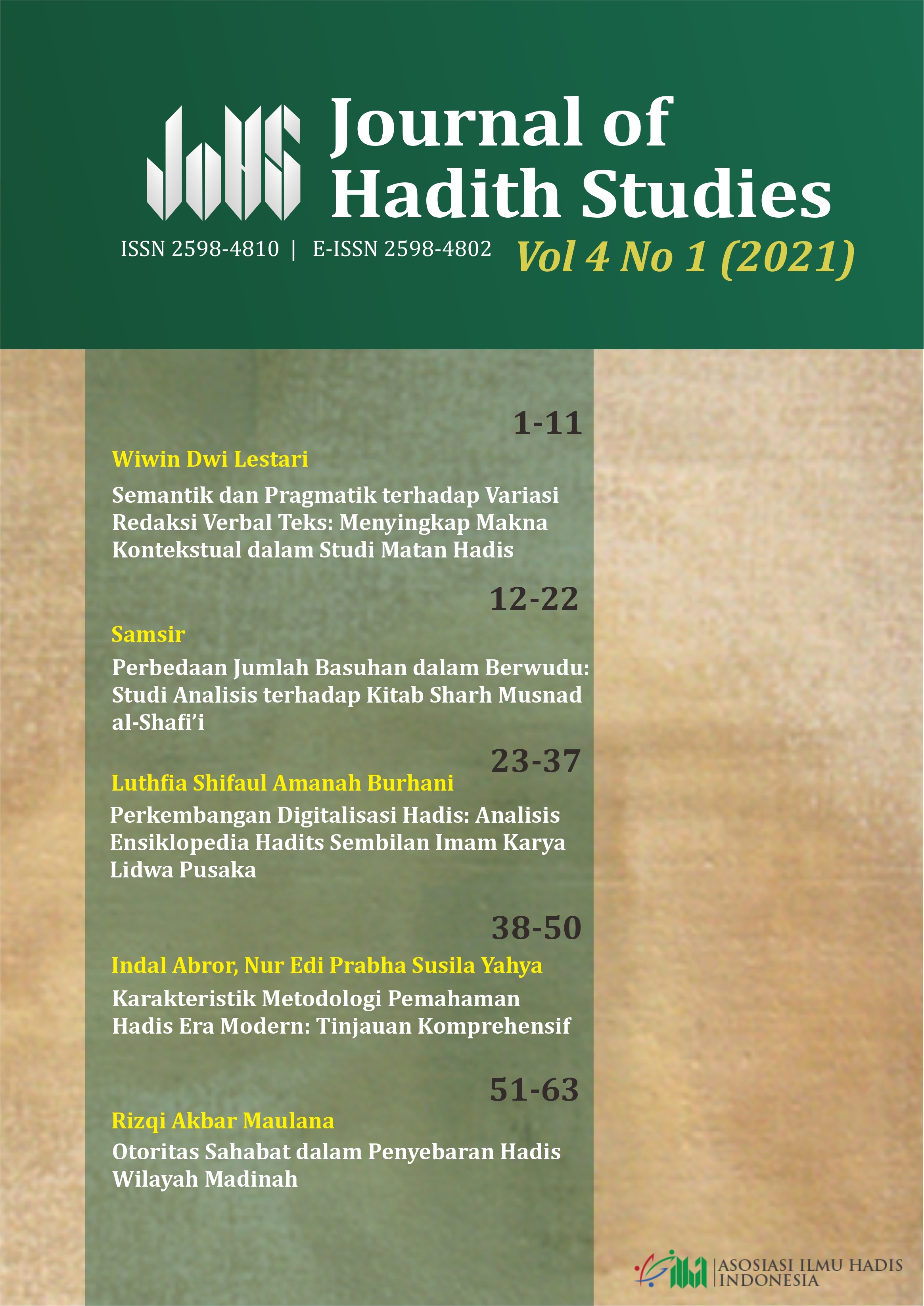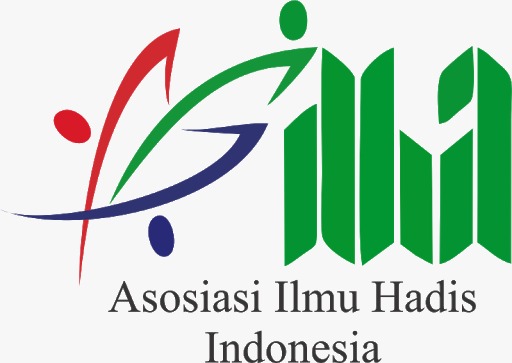Semantik dan Pragmatik terhadap Variasi Redaksi Verbal Teks: Menyingkap Makna Kontekstual dalam Studi Matan Hadis
DOI:
https://doi.org/10.32506/johs.v4i1-01Keywords:
Hadiths, meaning, pragmaticsAbstract
The study of hadith matn (content) is equally important as the study of sanad (chain of transmission), particularly in exploring linguistic phenomena to uncover deeper meanings. This article is based on the work of Fatihunnada and Nailil Huda, who examine patterns of verb shifts within the Prophet’s hadith texts, using semantic and pragmatic approaches. The focus is on the variations in past (madhi), present/future (mudhari’), and imperative (amr) verb forms across different narrations, and how these variations reflect specific contextual meanings. The study finds that although certain textual shifts might appear to deviate from formal Arabic grammar, they highlight the hadith's rhetorical eloquence and communicative effectiveness. Through morphosyntactic, semantic, and pragmatic analyses, it is demonstrated that such variations do not undermine the legal values of the hadith but instead enrich their interpretation according to context. For instance, verb changes indicate levels of intensity, reciprocity, or divine intervention, especially concerning eschatological events. The article also offers critical notes on the methodology employed by Fatihunnada and Huda, particularly regarding the limited clarification of their theoretical framework. In conclusion, this study emphasizes the importance of linguistic analysis, especially through semantic and pragmatic methods, for a comprehensive understanding of hadith texts. Such an approach ensures that the authentic meanings of the hadith are preserved and can be appropriately understood and practiced by the Muslim community.
Downloads
References
Abdul-Raof, H. (2006). Arabic Rhetoric: A Pragmatic Analysis. Routledge.
Al-Azhar, T. M. (2020). Balāghah: Kajian Retorika Bahasa Arab dalam Al-Qur’an dan Hadis. LKiS.
Al-Bukhari, M. I. I. (2016). Shahih al-Bukhari. Dar Turuq al-Najah.
Ali, A. Y. (2002). The Holy Qur’an: Text, Translation and Commentary. Amana Publications.
An-Nawawy, I. (n.d.). Al-Arba’in An-Nawawiyyah. Dar al-Ma’rifah.
Azami, M. M. (1977). Studies in Hadith Methodology and Literature. American Trust Publications. American Trust Publications.
Baalbaki, M. (2004). Al-Mawrid: A Modern Arabic-English Dictionary. Dar El-Ilm Lilmalayin.
Brown, J. A. C. (2009). Hadith: Muhammad’s Legacy in the Medieval and Modern World. Oneworld Publications.
Darmawati, U. (2018). Semantik Menguak Makna Kata. Pakar Raya.
Fatihunnada, & Huda, N. (2019). Kefasihan Bahasa Hadis Nabi Dalam Perubahan Kata Kerja. Al-Turas, 25(2).
Leech, G. N. (1983). Principles of Pragmatics. Longman.
Levinson, S. C. (1983). Pragmatics. Cambridge University Press.
Matsna, M. (2016). Kajian Semantik Arab Klasik Dan Kontemporer. Kencana.
Mudir, A. . (2012). Metodologi Studi Hadis. Amzah.
Palmer, F. R. (1981). Semantics (2nd ed.). Cambridge University Press.
Qudsy, S. Z. (2007). Ushul al-Hadith: Pengantar Ilmu Hadis. UII Press.
Rahardi, R. K. (2019). Pragmatik: Konteks Intralinguistik Dan Konteks Ekstralinguistik. Amara Books.
Yule, G. (1996). Pragmatics. Oxford University Press.
Yuliantoro, A. (2020). Analisis Pragmatik. UNS Press.
Yusri. (2016). Ilmu Pragmatik Dalam Perspektif Kesopanan Berbahasa. Deepublish.
Downloads
Published
Issue
Section
License
Copyright (c) 2021 Wiwin Dwi Lestari (Author)

This work is licensed under a Creative Commons Attribution-ShareAlike 4.0 International License.















